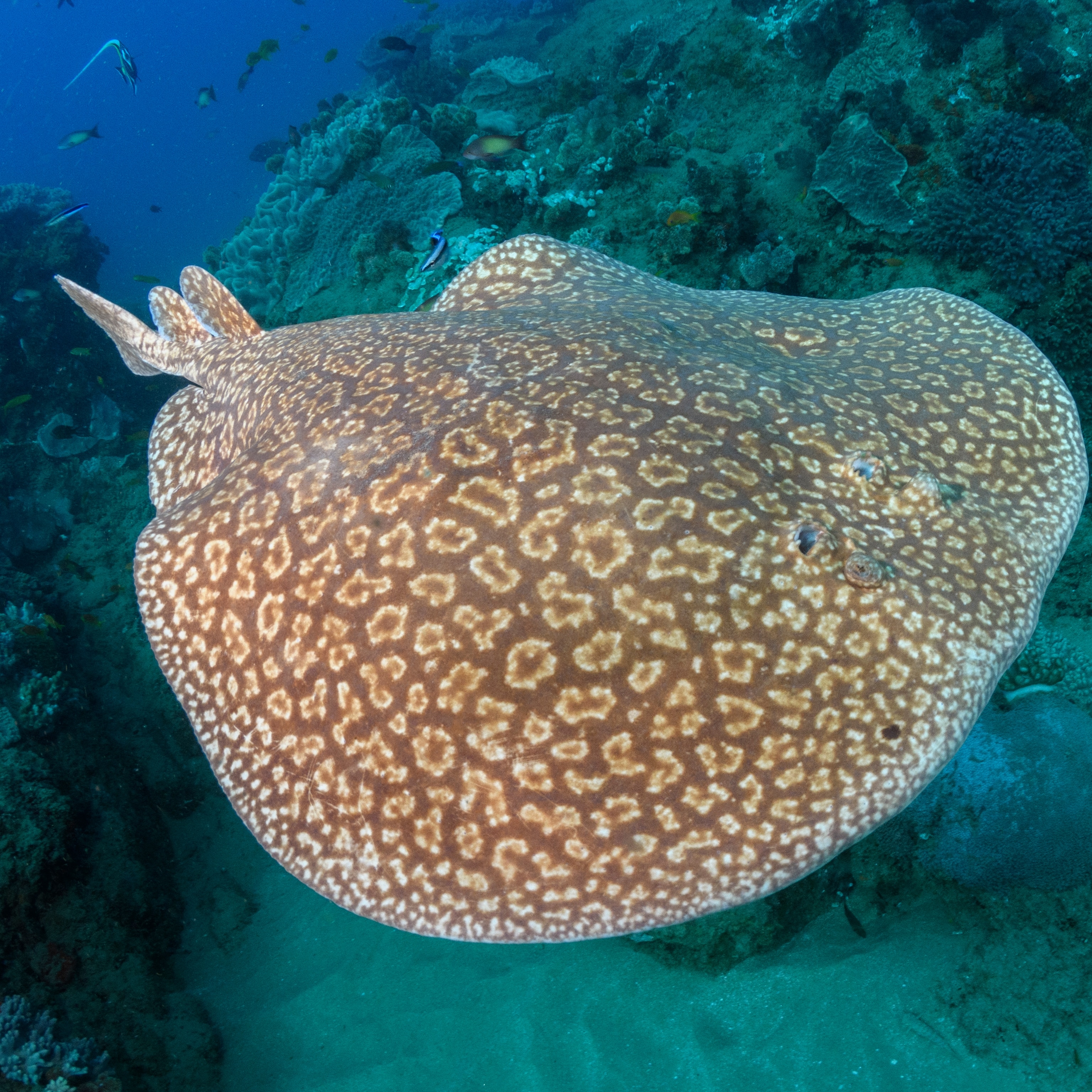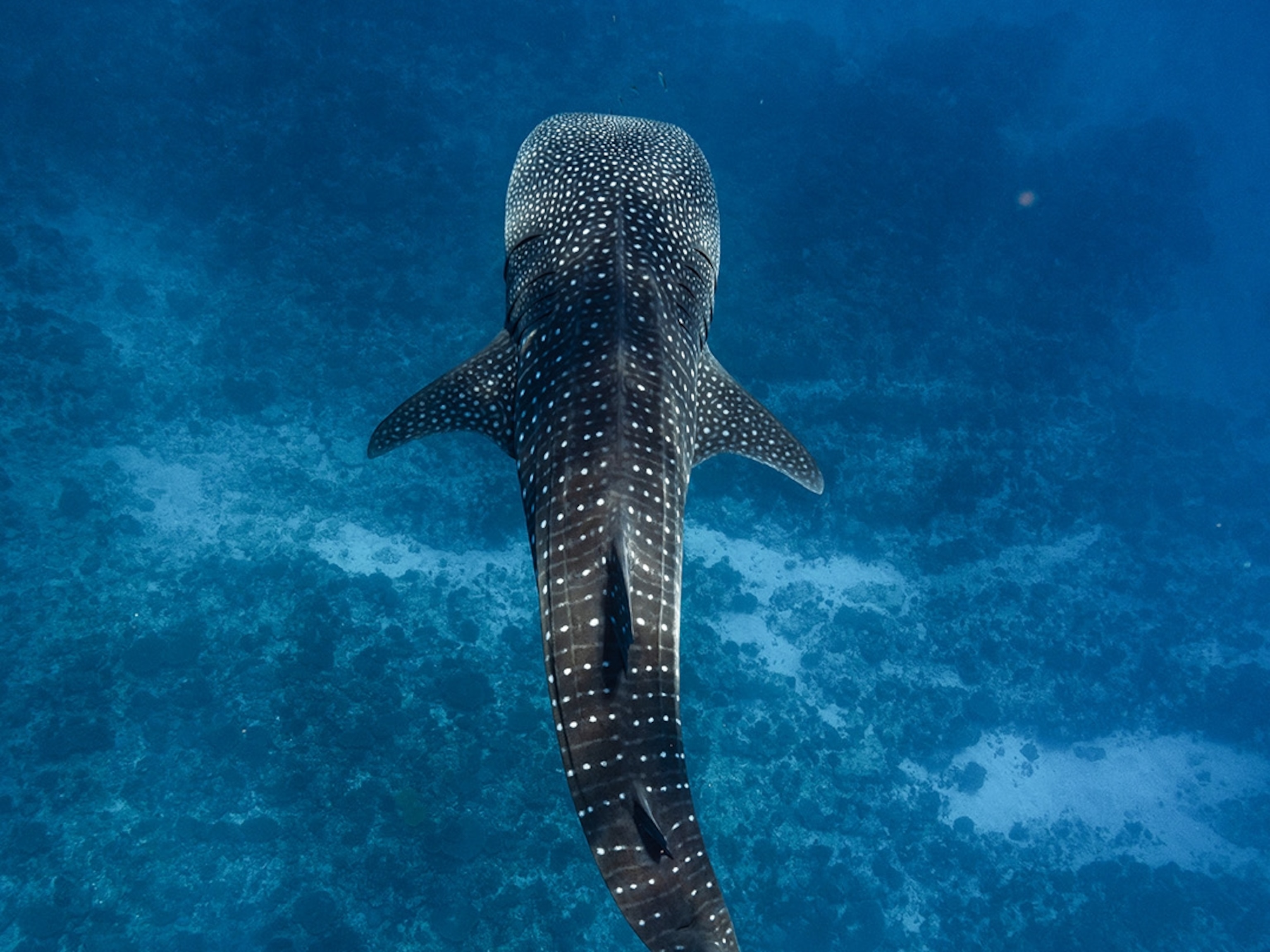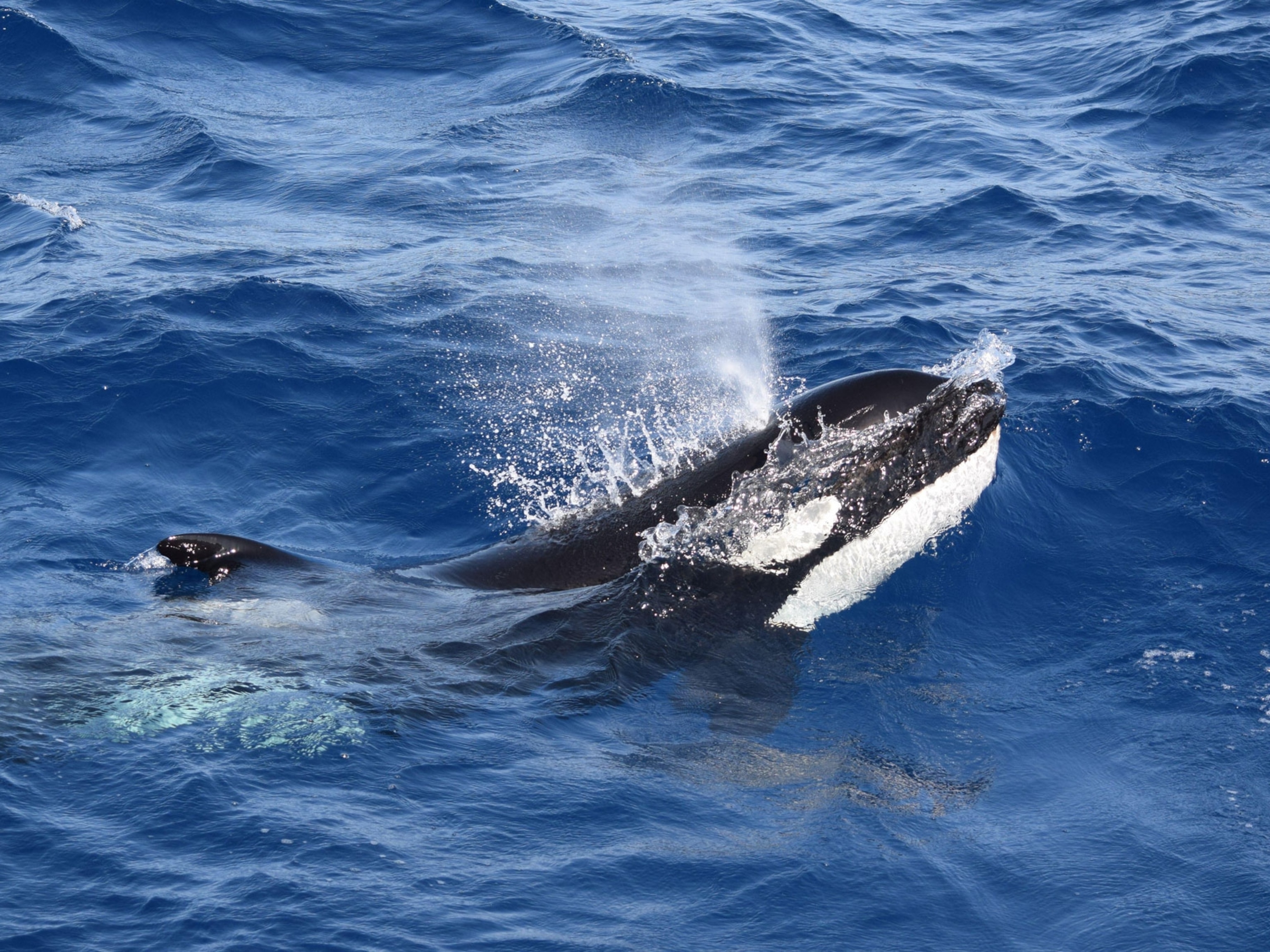
Exploring Indonesia by Pirate Ship
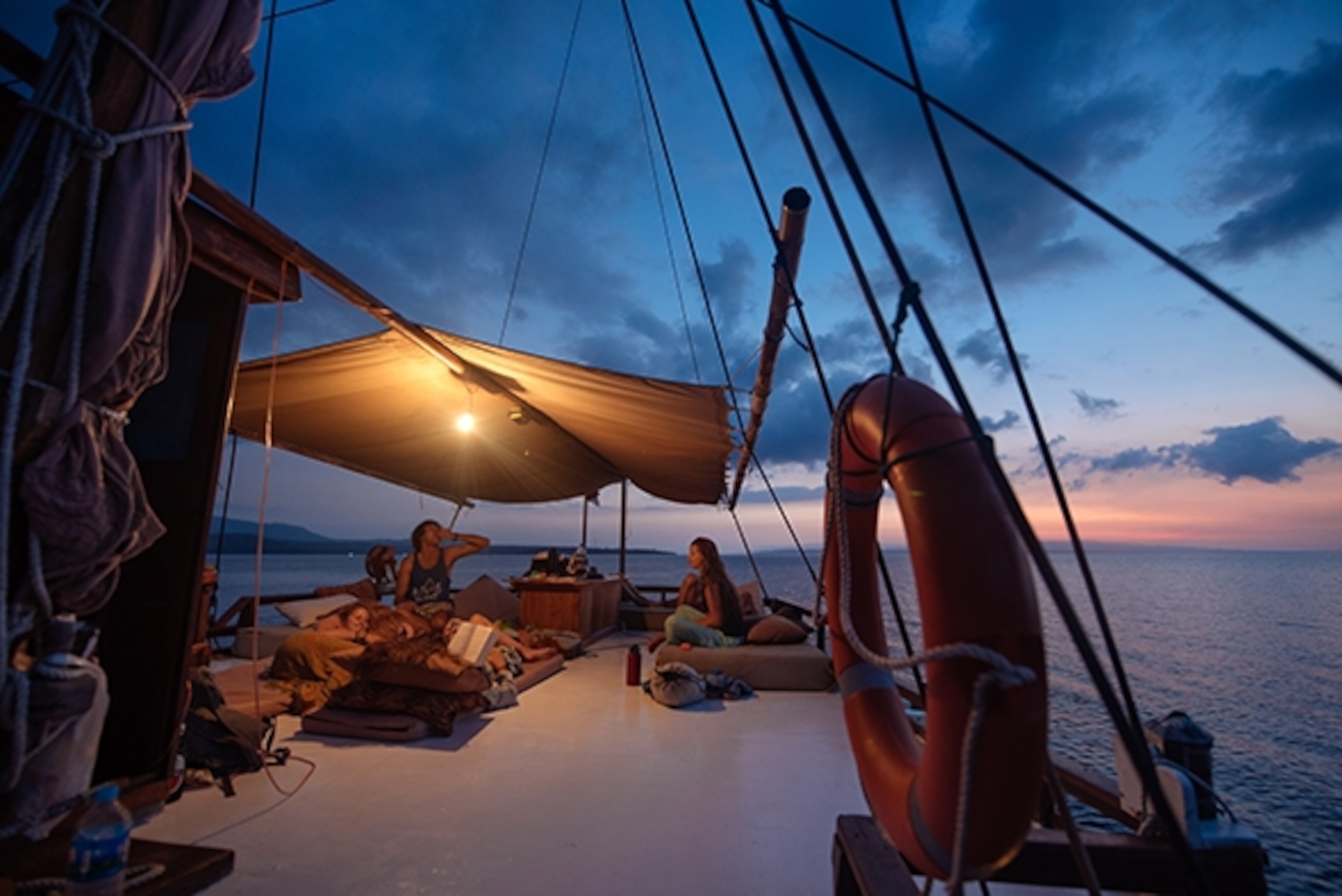
The infinite darkness and blue of a clear ocean is startling; as when we stare into the night sky, it reminds us in a very guttural sense of how small we are. The water I floated in with buoyant ease was the clearest I had ever experienced, a seemingly infinite prism for the long rays of sunlight that reached down like fingers into the deep. Swimming back to the side the weather-tested, double-masted wooden sailing ship, the Al Isra, I looked up at what was to be our home for the next two weeks as we sailed southwest through the Indonesian archipelago, as ships of this class had done for hundreds of years before us. Cutting yourself off from the outside world, and forcing your mind to be completely present has become a near impossible feat in this day and age. But here on this ship, without any connection to the outside world beyond the long-wave radio for emergency, the world became only as large as the furthest horizon and simple focus on the amazing world around us become compulsory.
We had sailed out of the port town of Labuan Bajo the night before, after taking on provisions for our 14-day sail from the province of East Nusa Tenggara to Al Isra’s home port in Kuta, Bali. A 75-foot phinisi-class wooden ship of the type used to ply Indonesia’s waters by traders and fisherman since the early 1700s, the Al Isra could only be described in layman’s terms as a pirate ship at its heart.

Britta Slippens, who owns and runs Blue Water Cruises, out of which she charters trips throughout eastern Indonesia on the Al Isra (“night journey” in Arabic), embodies as much freedom and beautiful compulsion in her life as any pirate could have dreamed of. In 1993, at age 21 and pregnant with her first child, Britta moved to the island of Sulawesi and put a down payment on the Al Isra. Over the next three years she lived on the island, working on the construction of her ship and soon to be new home. It was during this time that she fell in love with the Sulawesi people, having and raising her daughter within their community, all while learning the ways of the sea from the elders, who were helping her to construct the ship she had ordered. In the years since, Britta has called the Al Isra home, raised her now three kids on its decks, and become family with the Sulawesi crew who haven’t left her side since the ship’s launch. She now charters the ship to friends and to those willing to have an adventure away from the pedestrian tourist experience in Indonesia.
Beyond the invention of the gas-powered engine and GPS navigation, sailing has changed very little over the past several hundred years. Each night we would sleep on the upper deck, buffeted gently by warm winds, and wake each morning to a new day, greeted by fresh fruit and cowboy coffee, and often by a new and aweing seascape. Our group of seven friends, guided by Britta and the crew, settled into a simple routine of motion at ease. The sea guided our day; meals garnished with bounty pulled fresh from the ocean were interspersed with forays onto the islands off which we would anchor. We quickly encountered the beautiful simplicity found when you designate yourself for an extended period to a tiny wooden home, afloat and separated from the world beyond.
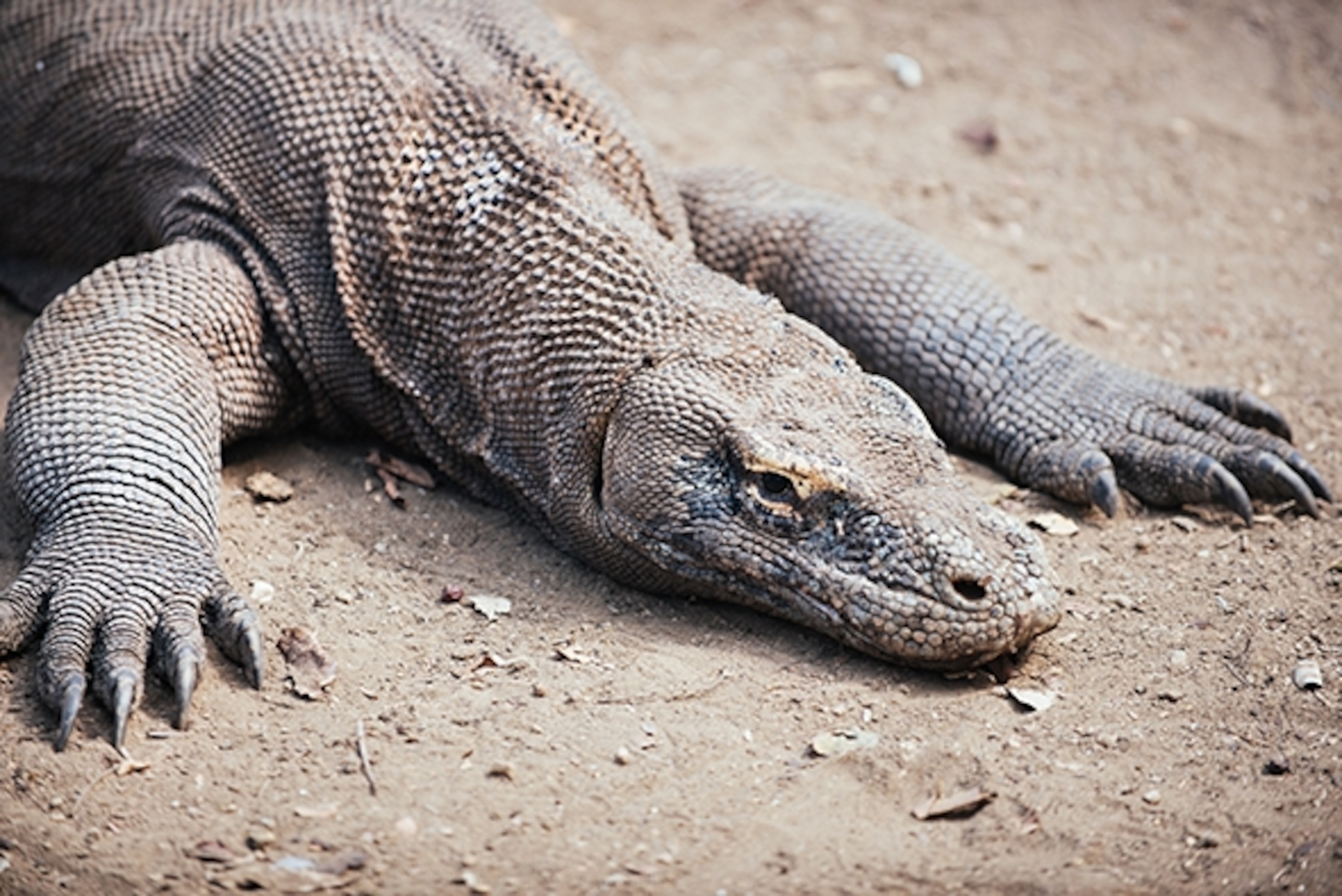
On our fourth day we landed on the main island if Komodo National Park, where, as promised by the local rangers, we were able to bear witness to the monstrous Komodo dragons—the largest species of lizard on Earth. With what appeared to be sinister malaise, the ten-foot lizards lounged around the mess hall of the small compound that made up the national park’s headquarters, one cold eye open and watching us as we looked on. The existence of such a creature brings a mythic presence to this part of the world, a place where a dinosaur from a time long past still exists in quiet revolt against extinction.
The islands in the Indonesian archipelago vary greatly in their complexion. Some have an almost desert like environment, with rolling grass hills garnished by sparse but towering palms, while others are swallowed up beyond their white beaches by deep jungle. As the Islands landscapes changed though, the ocean remained consistent in its uniform complexity; each different cove we explored by snorkel and fin yielding similarly beautiful coral beds, curious sea turtles and infinite shoals of fish that swam among us without fear.
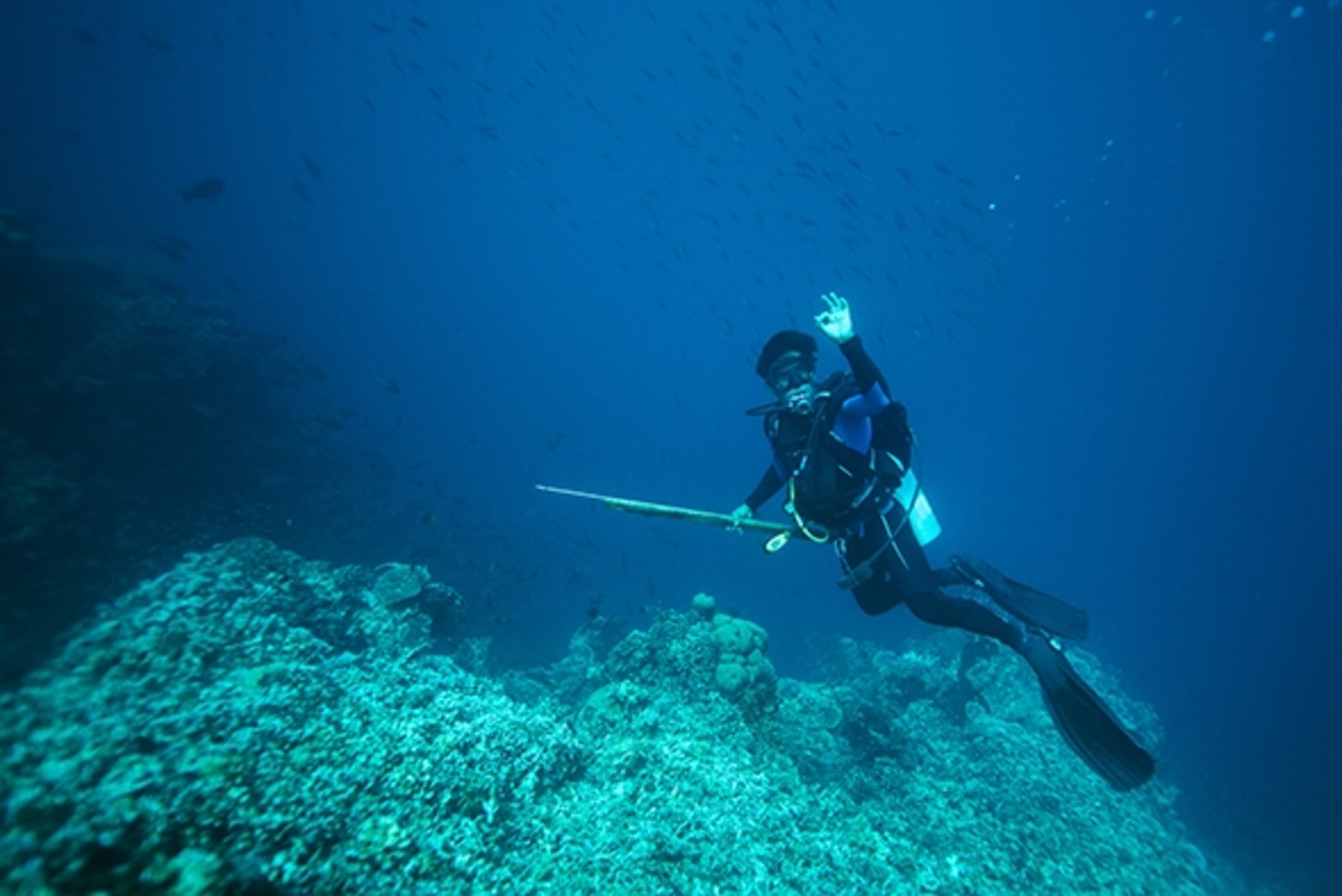
Martin, an Ecuadorian dive instructor who had found his way to Indonesia from his home in the Galápagos, led us on intro dives as we plied southeast toward Bali. Moving in the depths of the sea with an oxygen feed that allows for extended viewing is akin to flying. It’s a world humans weren’t meant to exist in, and so when we’re able to experience it, it changes our view of the world and how we perceive ourselves within it. The delicate ecosystems thriving in the massive coral reef banks we swam along suddenly become a real and very tangible entity. Martin swam ahead of us with spear gun in hand and disappeared around a coral head, only to emerge moments later having speared a giant trevally for our evening’s meal.
This trip gave me another unique window into an amazing and inexplicably deep pocket of living that goes on in the yet wild parts of the world. Existing alongside those who have made their lives of and by the sea for an extended period is an amazing learning experience, but I think the most valuable piece that I brought home with me from this adventure—something I don’t think you can gain from many other experiences beyond willing isolation midst the natural world—is a deeper understanding of the value found when you cut yourself off from the fast paced forward motion we all exist within in our daily lives. Stifling your ego, setting chance to the day’s weather as it comes, and the whims of you and your companions, consciously choosing to be solely in the moment is a sure fire way to happiness if I’ve ever found one.
After our final dive, before setting sail back across the straight toward Lombok and Bali, I stared down into the infinite blue, but this time not with lingering fear of what lay below but with a sense of repose and understanding. Britta and her crew had carved out a pocket of life for themselves here midst the great deep blue of the Indonesian sea that should be coveted beyond most, a life with a small sphere of concern, unfettered and beautifully simple.
Shooting in and around the the ocean is a relatively new thing for me, hailing from Montana, but this last trip in Indonesia shooting surfing/ sailing/ diving and more I feel like I got a lock on a few things that I would make sure to bring along on my next ocean adventure. Check it.
The Aquatech Elite D750 Housing
When your interacting with water as a photographer, being able to take your lens beneath the surface gives you an amazing new perspective to add to your storie. Aquatech makes a super durable and really easy to use housing that’s not exorbitantly expensive like many other housings. Its mainly for use near the surface, but I didn’t find myself needing to shoot anything much deeper than 30 feet as the light fades quickly the deeper you go.
- National Geographic Expeditions
When your ocean adventuring, you really only rely on one piece of clothing, your board shorts. United By Blue is an awesome brand that donates from each sale to cleaning up ocean communities around the world, but they also make a really nice pair of shorts. Super comfy fit, simple and stylish and really stretchy and comfy which makes them great for surfing as they wont tear as easy, these shorts are the short of shorts.
Goal Zero Nomad 13 Solar Panel with Sherpa 50 Battery
More often than not while exploring remote coastlines or sailing around on antiquated pirate ships, power isn’t always accessible. One thing that’s most always available in high dosage while on the ocean is sunshine. Harness it, store it, and put it to use in your camera batteries.
Salt water and electronics don’t like each other at all. This slick little watertight carry-on will protect your camera essentials in the gnarliest of conditions. If your boat is sinking, you could probably even use your pelican case as a flotation device on top of keeping all your camera gear dry and completely unscathed.

